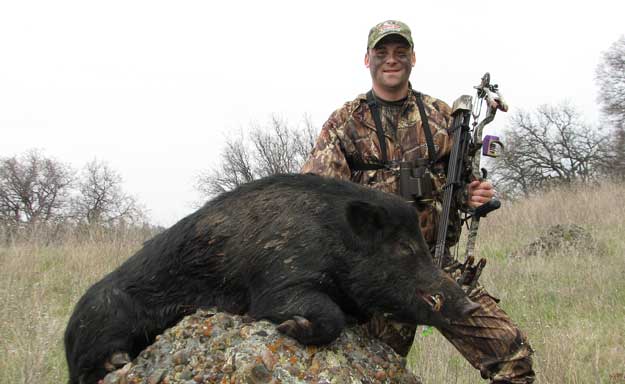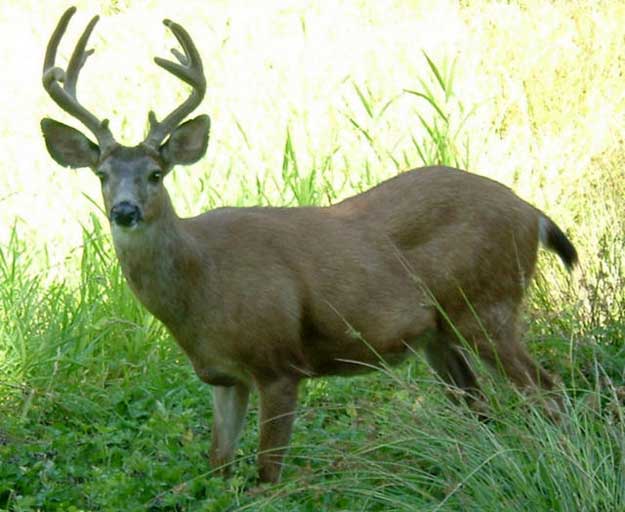
I always tell my hunters to take as many hogs as the number of arrows they bring and the amount of money needed to buy as many hog tags as they want to take in California. We have a year-round hog season in California with no limit on the number of hogs you can take. But you do have to have a big game hunting license and a hog tag. If you want to purchase five hog tags, we’ll take you out and let you harvest those five hogs with a bow.
Residents can get a hog tag for $22.00. The big game hunting license costs $164, and non-resident hog tags will cost somewhere between $72 to $75. If someone is fortunate enough to get an early season landowner elk tag and an early season landowner deer tag and then purchases several hog tags, they can take all three species on an August hunt.
The elk tag is the most difficult tag to draw because that tag is for hunting on the private land we manage. We have a long list of many people who want that August 1 elk tag, and drawing an elk tag through the open lottery is much like winning the Megabucks lottery.
One of the ways that many hunters acquire their elk tags is by going to a conservation organization’s banquet and bidding on one of those tags that may go for $20,000 to $30,000. But one of the best ways to be able to purchase an elk tag is to go to our website, www.justforhunting.com, and see what hunts and what tags we may have available. Not all the tags that we get for sale are private landowners’ tags. We have tags for other wildlife units where we guide. Our website has more information on these places to hunt elk.






























